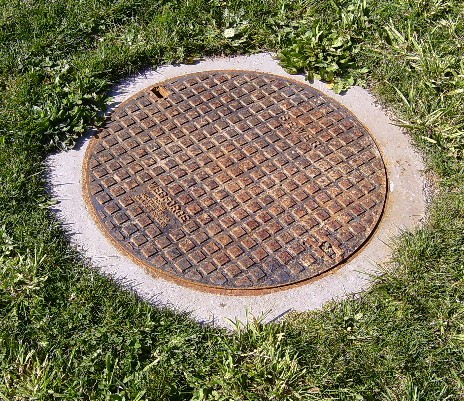When I started in the drainage business 40 years ago we called them Manholes.
Since then due to political correctness we have had; Person Holes, Access Points, Inspection Pits, but now we seem to be coming back to calling them Manholes.
We are not talking about the small inspection covers less than 300mm across for the individual house system but pits big enough for someone to climb down to inspect the public sewer or council storm drain.
Some manholes look like the photo, some have round concrete covers and some have square concrete covers.
But what does it mean to you?
Appearance
The initial issue is that the manhole may spoil the look of your driveway or paved area of the garden.
Maintenance
Hopefully with most new developments it will be quite a while before something goes wrong. Rebuilding in a long established area you may not be as lucky. For older sewers tree roots getting into the pipes are a big cause of problems, which might need action a couple of times a year.
Well if something goes wrong with the public system someone will want access to the manhole
Don’t bury the manhole or cover it with paving. You don’t want to delay things if there is a blocked pipe which affect you.
When you plan your house It’s going to be easier if you can give access to the manhole without workmen going through the house, or garage. If not you might have to take some time off work.
Also see Easements
